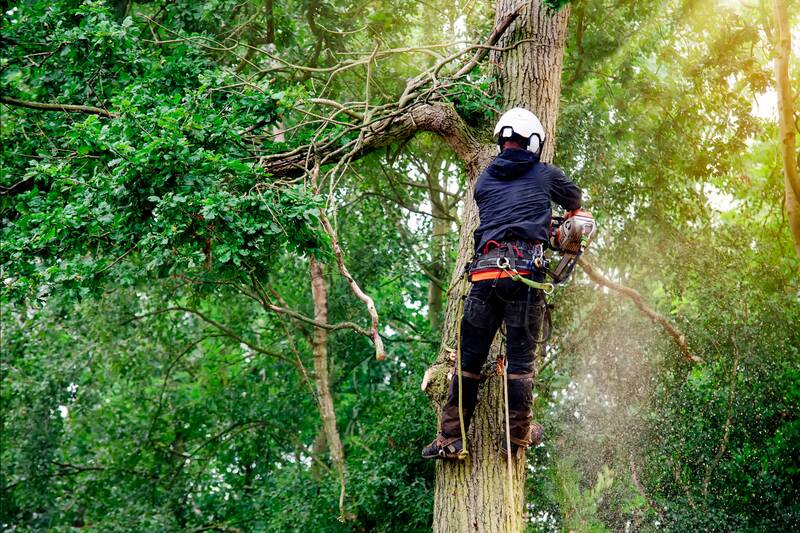
Tree removal projects are no small tasks, especially when dealing with a huge one. It requires careful planning, equipment, and a clear understanding of safety protocols. Whether dealing with a diseased tree that poses a danger to your property or simply making space for new landscaping, Arbor & Acre can help. Here’s a step-by-step guide to help you navigate the complexities of large tree removal.
Before cutting the tree, conduct a thorough assessment. Evaluate the tree’s health, size, and the potential risks involved. Look at its proximity to structures, power lines, and other trees. Consider the tree’s angle and how it might fall. This step helps you identify any challenges that could arise during removal. It is advisable to consult a trusted tree care company for a detailed assessment, the specialized equipment needed, and guidance on the expected fall direction.
Once the assessment is complete, the next step is to gather all the necessary equipment. Removing a large tree usually requires chainsaws, ropes, wedges, and possibly a crane for huge trees. Safety gear is equally important; such as hard hats, gloves, eye protection, and sturdy boots are essential to protect yourself during the process. Ensure all equipment is in good working condition before you begin. If you don’t have access to the right tools and protective gear, hire certified arborists for an efficient and safe process.
With equipment, it’s time to prepare the area around the tree. Clear the vicinity of any obstacles, including vehicles, outdoor furniture, and other items that could be damaged. Planning the tree’s fall is perhaps the most critical part of the process. You’ll need to calculate the direction the tree will fall, considering wind direction and the tree’s natural lean. If you prefer a more hands-off approach or lack the skills required, hire certified tree service experts to prevent accidents and ensure a smoother removal process.
It’s time to make the necessary cuts to bring the tree down. Start with a horizontal cut, known as the undercut, on the side of the tree facing the direction of the fall. Follow this with a back cut on the opposite side, slightly higher than the undercut. The goal is to create a hinge to guide the tree as it falls. As the tree begins to lean, step back and move to your pre-planned escape route. Precision in this step is vital to ensure the tree falls safely and in the intended direction. It is advisable to request the presence of tree service professionals to ensure everything runs smoothly from start to finish.
Once the tree is down, the work isn’t over. The aftermath involves cutting the tree into manageable pieces and removing the debris. Depending on the size of the tree, this can be a labor-intensive process. You’ll also need to address the stump. You can hire a tree care company to remove the stump or use chemical means. However, leaving the stump is not an option as it causes new growth or attracts pests.
Removing a large tree is a complex task that should always be taken seriously. From the initial assessment to the final cleanup, each step requires careful attention to detail and adherence to safety protocols. Whether you’re doing it yourself or hiring arborists, understanding the process can help you make informed decisions. Contact us at Arbor & Acre and schedule a consultation to ensure the job is done safely and effectively.
Trees are magnificent, sturdy entities that offer numerous benefits to landscapes and the environment. From curb appeal…
+ Read MoreWinter is upon us, which means it is time to ensure our indoor spaces are cozy and…
+ Read MoreWhen designing your landscape, it’s not just about patios and decks, but also trees and shrubs. If…
+ Read More